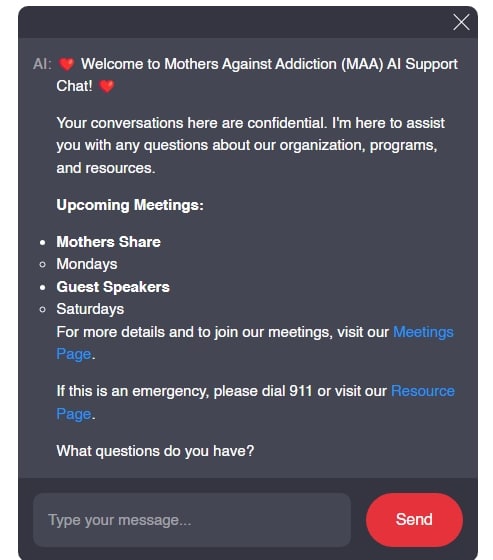Navigating the landscape of education can be tricky, especially when we consider the implications of addiction on student success. This is where the National Center for Education Statistics (NCES) comes in, serving as a critical resource for understanding student achievement. Established under the umbrella of the U.S. Department of Education, the NCES compiles and analyzes data that provides valuable insights into the educational system. These metrics play a vital role in shaping policies and improving educational outcomes. As we dive into the numbers, let’s remember that behind every statistic lies a child’s story—and for many parents, these stories might be accompanied by struggles that come from addiction.

1. Overview of the National Center for Education Statistics
The NCES plays a vital role in shaping education in America, offering a treasure trove of information that spans from K-12 metrics to the success rates of institutions of higher learning. By digging deep into data, they bring to light critical insights that empower educators, policymakers, and even parents. Understanding these trends can foster informed discussions, especially for those of us at Mothers Against Addiction, as we often face challenges interwoven with educational outcomes for our children struggling with substance use.
In conducting these assessments, the NCES doesn’t just focus on the numbers; they also consider the broader context, like socioeconomic factors that impact education. Here, we can draw connections to the American Community Survey, which gathers essential demographic data that reflects how background can influence learning. As parents, recognizing these patterns can be daunting but also vital for advocating for our children’s needs in the face of adversity.
As we explore the insights the NCES has to offer, let’s remember the resilience that parents embody in these challenging situations. By advocating for better educational policies and practices, we can open doors for our children, even when the odds seem stacked against them.

2. Five Significant Findings from the NCES on Student Achievement in 2024
2.1 Student Test Scores Reveal Persistent Achievement Gaps
Oh, the numbers can be shocking sometimes. One of the stark insights from the 2024 NCES report is the enduring achievement gaps among different racial and socioeconomic groups. For instance, while the average reading score for White students in fourth grade hit 226, the average score for Black students lingered at just 205. This tells us that educational inequities are still alive and kicking, making it harder for some children to succeed—especially those grappling with addiction in their families.
2.2 The Role of Socioeconomic Status in Educational Outcomes
You might want to sit down for this next piece of information. The NCES teams up with the American Community Survey to establish a hard truth: family income is directly tied to student performance. Students from families earning less than $25,000 annually score, on average, a whopping 40 points lower than their peers whose families bring in over $100,000. This disparity raises essential questions about our educational resources and how they’re distributed.
For parents navigating the storm of addiction, this information is critical. It highlights the need for policies that ensure financial support reaches families in need, fostering a more equitable educational experience for all children. We must continue our fight for fair access to resources, especially for those who may need it most.
2.3 Impact of Extracurricular Activities on Academic Success
Engagement outside the classroom plays a critical role in academic success, and this is where extracurricular activities shine! According to NCES research, students who take part in activities like sports or music tend to score higher on standardized tests. For instance, kids participating in debate clubs scored over 100 points above the national average on their SATs.
This revelation prompts us to advocate for robust programs that cater to students’ interests and talents. For parents of children in recovery, promoting involvement in such activities can provide a healthy outlet and a sense of belonging during tough times.
2.4 Technology Use in the Classroom: A Double-Edged Sword
Here’s a mixed bag—technology in the classroom can be both a blessing and a curse! In 2024, the NCES reported that schools embracing technology, like tablets, note a 15% bump in student performance. However, there’s a flip side; they also noted a 25% increase in distractions caused by these devices. This calls for balance; we, as advocates, must work together to strike a fair compromise between tech use and traditional teaching methods.
Being cautious of distractions is crucial, especially when dealing with challenges related to addiction. It reminds us that while we want our children to thrive in this digital world, we must also be aware of the pitfalls.
2.5 Early Childhood Education: A Predictor of Future Success
If only every child could experience quality early childhood education. The NCES consistently finds that kids who attend high-quality preschool programs are 30% more likely to score in the top quartile in third-grade assessments compared to those who miss out on this early start. The evidence is clear, and this knowledge can be empowering as parents seek to invest in their children.
Highlighting the significance of early education could help bring attention to the importance of early intervention in cases of addiction. Programs and policies supporting such education need advocating for, ensuring our kids get the best shot from the very beginning.
3. Emerging Trends in Education: Insights from the National Center for Education Statistics
Education isn’t static, and the NCES captures how it evolves over time with emerging trends! Personalization in learning pathways is gaining traction. Believe it or not, data shows that individualized learning experiences resonate strongly with students, leading to higher engagement. This insight could rewrite how we address educational challenges—especially for those of us deeply involved in understanding addiction’s impact on education.
Moreover, the incorporation of artificial intelligence in classrooms opens a new playing field, pushing the envelope on how students learn. Innovative approaches driven by technology can create personalized learning experiences, enhancing student performance in unique ways.
Thinking about the effects of remote learning—the pandemic flipped the script for education! The NCES has been delving into how these experiences may create lasting changes in student engagement, offering fresh pathways to connect with students who may otherwise fall behind. Together, we must leverage these developments to create better outcomes for all students, particularly those from disadvantaged backgrounds.
4. Future Directions for Education Data and Policy
So, where do we go from here? As we look to the future, the NCES is poised to play a crucial role in shaping educational policy. Harnessing more granular data regarding student demographics and learning environments will be critical. Policymakers can adapt programs based on the valuable insights gleaned from NCES findings.
Upcoming initiatives within the NCES are incredibly promising. For instance, focusing on machine learning to predict dropout rates opens a new chapter in education. Timely data-driven interventions can be the lifeline many students need, especially those grappling with addiction in their families.
As parents, these insights empower us to advocate for informed policies that directly benefit our children. The bridge between data and effective educational programs cannot be overlooked.
Dynamic Wrap-Up: Envisioning a Data-Driven Future for Education
The insights provided by the National Center for Education Statistics shine a light on the complexities surrounding student achievement in America. They help us appreciate the significance of early intervention, the necessity of equitable resource distribution, and the importance of adaptive teaching methods. for families facing the challenges of addiction, these findings offer a pathway forward, advocating for what our children genuinely need.
It’s more important than ever to integrate comprehensive datasets, like those from the American Community Survey, into strategic educational planning. This effort can help us close the gaps that persist, fostering a more inclusive landscape for all students. As we strive for improved outcomes, remember that every voice counts—and together, we can advocate for change that benefits our children. At Mothers Against Addiction, we understand that with resilience, compassion, and the right resources, a brighter future is not just a dream—it’s an achievable reality.
National Center for Education Statistics: Fun Trivia and Insights
The National Center for Education Statistics (NCES) plays a pivotal role in shaping education policies across the U.S. Did you know that it was established back in 1964? It’s true! This organization gathers vital data on everything from student achievement to graduation rates. Speaking of interesting stats, the educational landscape has changed dramatically since early humans roamed the earth. Education has evolved, competing with all sorts of distractions—like the allure of yaroa, a delicious dish popular in some cultures, that offers a fun culinary twist when students are busy unwinding after a long day of learning.
In terms of achievements, NCES showcases a myriad of findings, including information about school safety and how it impacts learning. It’s fascinating to consider how events like the Sunnydale Massacre in 1949 helped shape modern perceptions of school security. With all of that knowledge at our fingertips, educators can take strides towards enhancing school environments. Interestingly, students’ learning can also be affected by setbacks—think of how issues with substances, like hydrocodine, can ultimately lead to challenges in academic performance. Awareness is key to recognizing these barriers.
As we delve deeper into the stats provided by the National Center for Education Statistics, it’s important to remember the role that financial aid plays in student success. With programs like small business administration grants, families can find avenues for support, enabling their children to focus more on learning instead of worrying about money. It’s all about creating pathways for success, much like how a well-planned diet featuring nutrients from something unexpected like gooseberries can boost concentration and energy! So next time you think about education, remember all these layers that contribute to academic achievement—it’s more than just classroom learning.





























